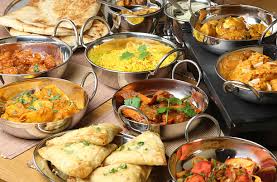When there were no processed foods, What did your great-grandfathers eat? Traditionally, the Indian diet used less processed ingredients and more natural food. The influence of Western products and eating habits has increased significantly, resulting in a threat to nutrition security, not just in India but across the globe.
Until 50 years ago, millets were supposedly the major grain grown in India. Infact, as far as we can look into the history of civilisations, they have been widely cultivated around the globe as cereal crops or grains for human food and as fodder.
What Changed in the Dietary Habits of India? In post Globalisation era the Nutritional Quota of the country has not only been impacted by the changing cultivation practices of farmers but also by the dietary habits of people in general. This was also the time of the Green Revolution or the Agriculture Revolution – a period of technology transfer initiatives which ushered dramatic increases in crop yields and agricultural production.
The Story of Millets
Often referred to as ‘a poor man’s food’, the consumption and cultivation of millets suffered a huge setback as a result of the government focussing on rice and wheat production with the coming of mechanised agricultural equipment and a high-yielding variety of seeds.
Due to their lack of commercial importance and the limited scope for developing new hybrids, millets were not favoured by private players as a profitable source of income in terms of mass generation. This, coupled with the western influence of increased consumption of processed food, brought a massive shift in the dietary habits of people in India.
However, the tide is now turning in favour of millets, the Super Crop.
With the initiative of India and support from more than 70 nations across the globe, the United Nations General Assembly has declared the year 2023 ‘International Year of Millets’. As per the vision of Prime Minister Modi, the Government of India has declared to celebrate IYOM, 2023 to make it a people’s movement.
The year will mark a growth for Indian millets, recipes, and value-added products to be accepted globally.
Good for the Consumer, Cultivator & Climate
Millets are the ancient crops of mankind, their earliest evidence has been found in the Indus civilization. It was one of the first plants to be domesticated for food and has been hailed as the ‘right crop’ for rainfed agriculture. In certain countries of Africa, other millets such as fonio and tef are grown. They were the first crops to be domesticated by mankind in Asia and Africa which later on spread across the globe as critical food sources to the evolving civilizations
Considered a native crop of India, millets contribute largely to the food and nutritional security of the country. They are popularly known as Nutri-cereals as they provide most of the nutrients required for the normal functioning of the human body.
Millets are divided into two broad categories;
– Major Millet – include sorghum (jowar) and pearl millet (bajra)
– Minor Millets – include finger millet (ragi/mandua), foxtail millet (kangni/Italian millet), little millet (kutki), kodo millet, barnyard millet (sawan/jhangora), proso millet (cheena/common millet), and brown top millet (korale)
In fact, all these millets have a shorter growing duration as they complete their life cycle in 2-4 months. They fit a wide range of cropping systems and also adapt themselves to changing environmental conditions, especially during the vagaries of monsoons.
The Famine Crops!
Millets are often referred to as famine crops since they are the only crops which provide assured yields in famine situations. Also referred to as “Orphan Crops”, they are considered to be the last option for cultivation as they have less demand in the market and profits earned are also lower than other crops.
They are climate resilient and drought resistant!
Currently, millets have gained popularity again owing to their good nutritional values, documented health benefits, versatile environmental adaptation, sustainability in low-input agriculture and organic cultivation amenability.
Millets are rich in high-fibre content and can alleviate many diseases;
– They are packed with ‘starch’ – a nutrient that plays a major role in reducing the risk of diabetes and other related diseases.
– They act as prebiotic feeding micro-flora in the inner ecosystem that hydrates the colon to keep the human body system from being constipated.
– The high levels of tryptophan in millet can produce serotonin – a chemical that calms the nerves.
– Niacin in millet can help lower cholesterol.
– Their consumption decreases triglycerides and C-reactive protein, thereby preventing cardiovascular disease.
– Millet varieties show high antioxidant activity and most of them are gluten-free and non-allergenic, rightly keeping up with the present-day “health concerns”
Binging Back the Super Crop with ‘Millet Mindfulness’
During his message at the opening ceremony of the International Year of Millets at FAO Headquarters in Rome, Italy, Prime Minister Narendra Modi touched upon raising awareness to create ‘Millet Mindfulness’ – highlighting the tremendous role that institutions and individuals can play.
He said that institutional mechanisms can encourage the production of millet and make it profitable via policy initiatives.
Export Boost!
India is the largest producer of millet in the world. The country is poised to become the global hub for millets with a production of more than 170 lakh tonnes which makes for more than 80 % of the millets produced in Asia.
Millets are grown in about 131 countries and are the traditional food for around 60 crore people in Asia & Africa alone. 2023, the ‘International Year of Millets’ is set to provide a unique opportunity to increase global production, ensure efficient processing, consumption, and subsequently promote better utilization of crop rotations.
Moreover, the extended trade of millets on a global level can encourage better connectivity throughout food systems while also promoting it as a key component of the food basket.






















 WhatsApp us
WhatsApp us